Sole Abscesses in Horses: What You Need to Know
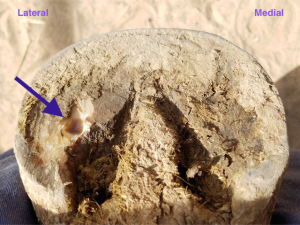
An opened sole abscess. Note the pus pool within it. This is a very common location for sole abscess in the hoof.
You walk out to feed your horse in the morning before work and you are shocked to see that he cannot walk. He hops over to his feed on 3 legs. You see no evidence of an accident of any kind. There’s not a mark on him. What on earth could be wrong?
As a horse person, you should know about sole abscesses. Why? Because they are the most common cause of sudden lameness without an obvious cause.
While there are several more common diagnoses for a horse that is suddenly, inexplicably SEVERELY lame, sole (foot) abscess is the most common cause.
Most horses with sole abscess are very lame at the walk, and some cannot bear weight at all. Early or small sole abscesses may cause less severe lameness. In most cases, horses with sole abscess become increasingly lame until the abscess is either opened and drained by a vet or farrier, or the abscess breaks open on its own. If not treated, many sole abscesses break through an opening in the coronet band.
Horses with sole abscess often have swelling of the lower limb, which can be confused with other injuries. Most horses with sole abscess have strong digital pulse present, and usually the affected hoof is warmer than the unaffected one. Some horses with sole abscess have low grade fever.
HOW DID THIS HAPPEN?
Sole abscesses usually develop as a consequence of some separation in the sole of the foot that allows bacteria to colonize the deeper tissues of the foot. Abscesses can develop from any penetration of the sole by a foreign body, such as a nail. A sole bruise can turn into an abscess – a blood clot and damaged tissue under the sole becomes very prone to colonization by even a few bacteria.
Whatever the cause, somehow bacteria get into the deeper tissues of the hoof. They start to multiply. Inflammatory infection-fighting cells (white blood cells) migrate to the area. They accumulate there and try to destroy the bacteria by ingesting them, and they kill bacteria by dumping their toxic enzymes into the area. These enzymes further damage the tissues themselves.
Pus (a toxic stew of dead white blood cells, toxic products from white blood cells liquefied tissue, and dead bacteria) is formed. The pus pocket increases in pressure, causing intense pain from pressure and irritation to nerve endings in the sensitive tissues of the hoof. This leads to severe lameness.
Many horses with sole abscess will not even touch their hoof to the ground!
Many horses with sole abscess will not even touch their hoof to the ground!
The abscess worsens (the pus pocket enlarges and spreads under the sole or hoof wall) until it breaks open at the coronet band, or it is opened by vet or farrier and drained through the sole.
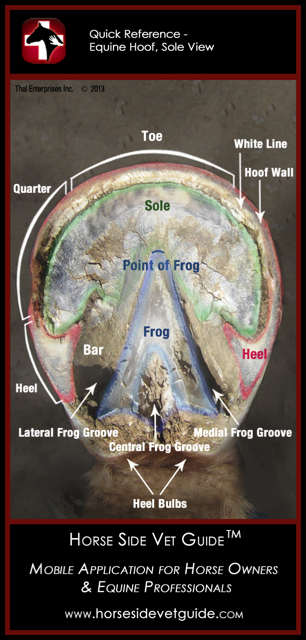
Images like this are on your phone at all times when you have the Horse Side Vet Guide app!



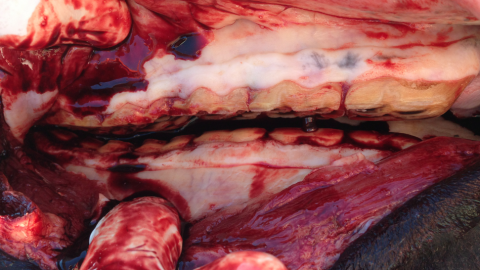
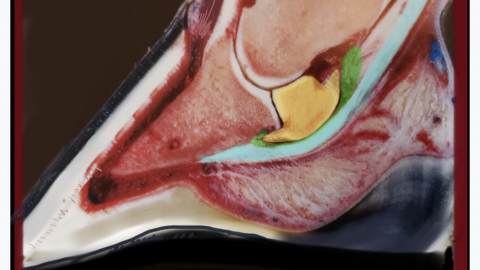
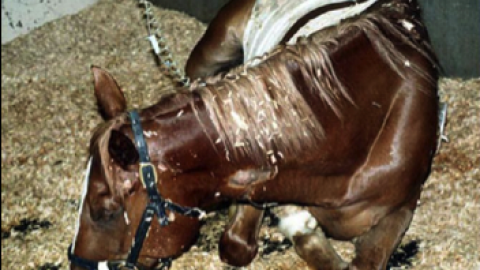

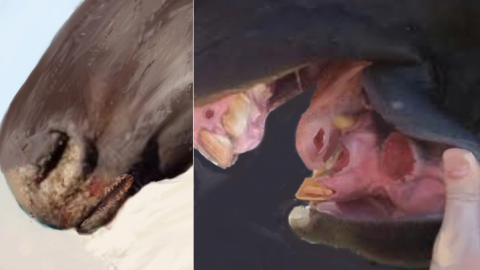
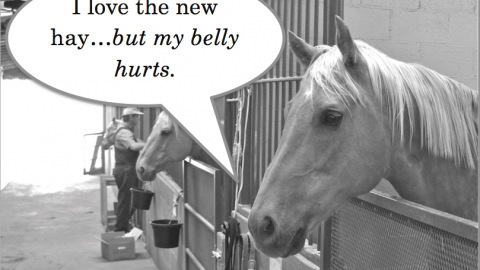










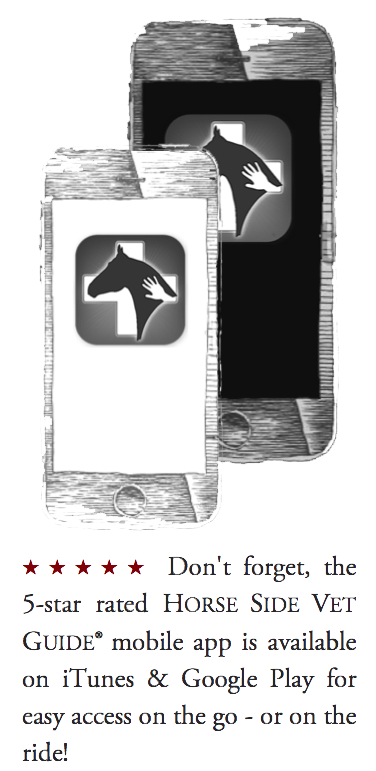

The sole needs to be protected until the wound heals from the inside out. You do not need to soak once the abscess is drained and if the horse is comfortable and your vet feels there is not any more closed infection. How long treatment continues depends on the horse, the healing process and how hard the tissue is becoming as it heals. A poultice may be helpful. The hole may take weeks to months to fully close. But usually the floor of the hole becomes very hard within a week or so. Depends again on the horse and the severity. Prevention is selection of horses with good feet, good, dry, drained footing, consistent exercise, picking of feet frequently, consistent and appropriate shoeing or trimming interval. – Dr. Doug Thal, Author of HSVG
H there, My horse had 3 abscesses on separate feet within a 2 week period.
Can you suggest the correct method for treating the hoof after the abscess has been found and drained?
Some people soak , some poultice and wrap etc etc – what duration of time does any treatment continue?
How long does it take for the sole to regrow over the hole, and what do we need to do to prevent it in future?